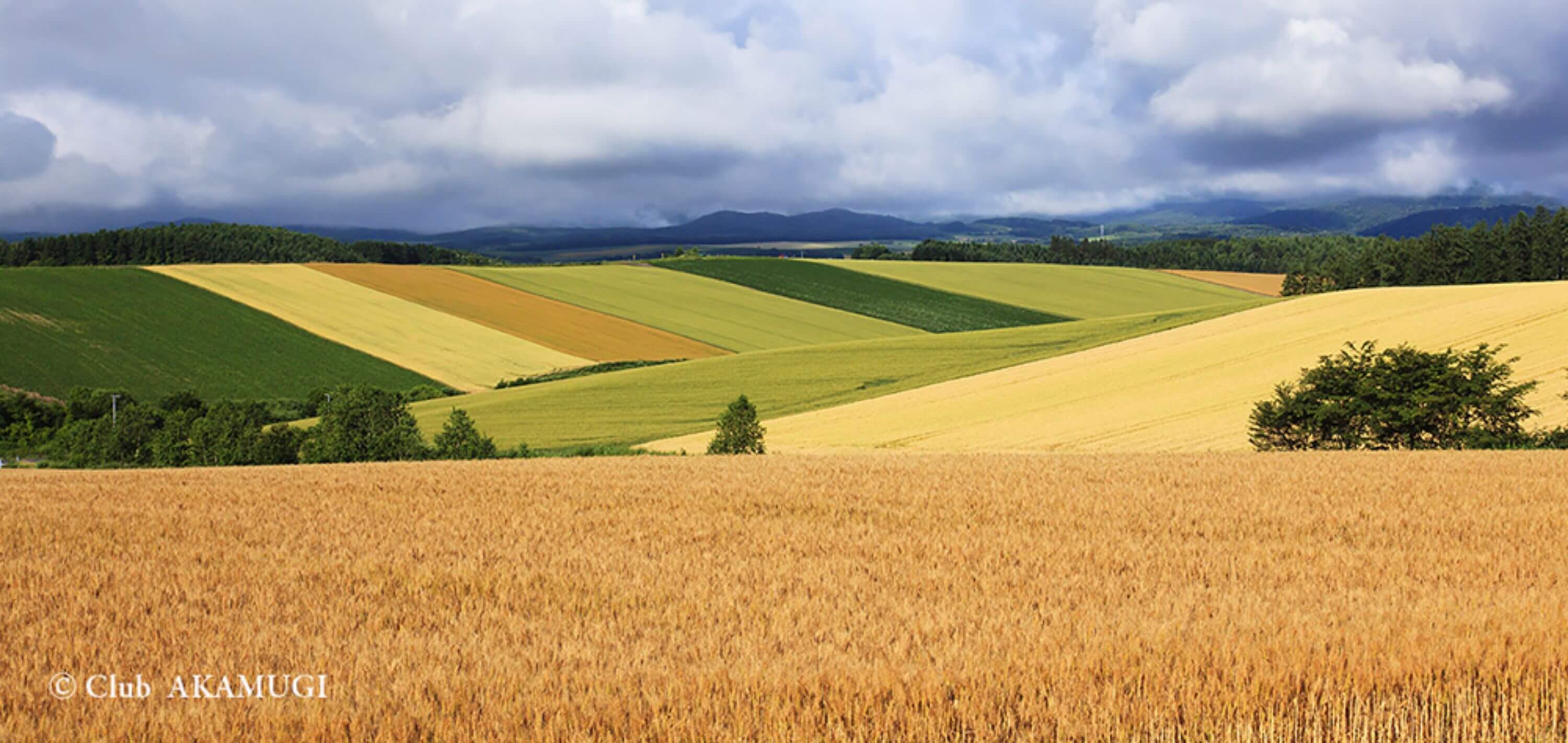
Biei's Famous Wheat Harvest & Red Wheat
What do you know about wheat harvests?
“I've heard of them, but that's about it…”
Well then, let's review them for both those who know and those who don't!
In Japanese, the word “wheat harvest” is written with both the characters for “wheat” and “autumn”. Afterall, wouldn't you say it's usually the case that crops are planted in spring and harvested in autumn? However, here in Hokkaido, the trend is to cultivate wheat in the autumn, known in Japanese as “aki-maki komugi” (literally, “autumn-sown wheat”).
“But doesn't it snow like crazy in Hokkaido's winter?”
Yes, that is indeed the case. It snows a lot and that snow really piles up! After the seeds are sown in autumn, the young wheat stems only reach about 20cm in height before they get buried by the snow.
“Well, then they must surely freeze! Don't they die?”
Well, that's the mystery of the thing. They don't die and they don't freeze either!
The temperature beneath the snow stays constant and the young wheat stems sit tight throughout the winter. When spring comes and the snow melts, we're greeted with their greenest of green form and they gradually start to grow taller.
One theory is that this is similar to the Japanese practice of “mugifumi” or “wheat treading”, whereby the seedlings of autumn-sown crops are deliberately flattened, promoting strong root growth, shorter and sturdier stems and longer ear length, leading to a good yield. The weight of the snow causes an effect similar to “mugifumi”.
The wheat, which grows up strong, turns from green to gold in around July. Even though it's summer, the hills, dyed entirely in golds, look more like autumn scenery.
So despite the fact that the harvest is usually associated with autumn, in Biei, you'll hear the word “harvest” a lot in the summer!
But who is it who made Biei's harvest so famous?
That would be the late photographer Mr. Shinzo Maeda, whose works are in the Takushinkan Gallery in Biei. His pictures made Biei, a place that nobody had ever heard of before, famous almost overnight. Displayed on a big panel in the Takushinkan Gallery is his masterpiece “Autumn Vividness”, a miraculous photograph capturing the fleeting moment in which a ray of sunset breaking through the pitch black clouds of a dark evening shower hits a red field of “red wheat”, making it a brighter red still.
However, these days it's not so easy to see “red wheat”. Because it collapsed so easily and was weak to sicknesses, it was replaced with other kinds of crops.
“That's such a shame! So I guess we can't see the red wheat, then…”
Well, actually, in response to so many visitors' requests, there are those who are doing all they can to restore “red wheat” today.
In 1999, to celebrate the centenary of Biei's founding, volunteers from within the town created a “Revitalise the Red Wheat Club” and restored the red wheat on a hill facing the sunset. Today, the “Revitalise the Red Wheat Club” has been renamed the “Protect the Red Wheat Club” and they run activities to protect our precious “red wheat” scenery.
“I see! So I can see it! But for a wheat that precious, I suppose all I can do is appreciate the way it looks?”
Not true!
The “Protect the Red Wheat” club wants you to have an even wider appreciation of the special red wheat, so they offer the red wheat in products of all shapes and sizes.
For example, at Douglas Fir pasta restaurant, you can sample spaghetti and beer both made from red wheat.
And, at Tsuboya Bakery, they sell red wheat cookies and red wheat sponge cakes.
At roadside station “Biei Oka-no-Kura”, too, red wheat beer, red wheat udon noodles and red wheat cookies are all sold. We recommend these as a great Biei souvenir!
The wheat harvest and red wheat that paint Biei in colour in July… Come and experience time slipping slowly by, gazing at the magnificent patchwork hills as this eternal land wins your heart.
~A request from the people of Biei~
Red Wheat Hill has been specially opened to the public so you may enter the field but usually fields in Biei are not open to the world to enter, so we sincerely ask that you be aware of this. Please have an enjoyable trip and take pictures while observing our No Trespassing rules. Biei's patchwork hills are the result of agricultural product that our farmers have worked tirelessly to create. Please never enter the fields and enjoy the scenery from the paved roads. We thank you for your cooperation in helping us to preserve Biei's beautiful fields for the generations to come.


.jpg)
.jpg)
2.jpg)

.jpg)


